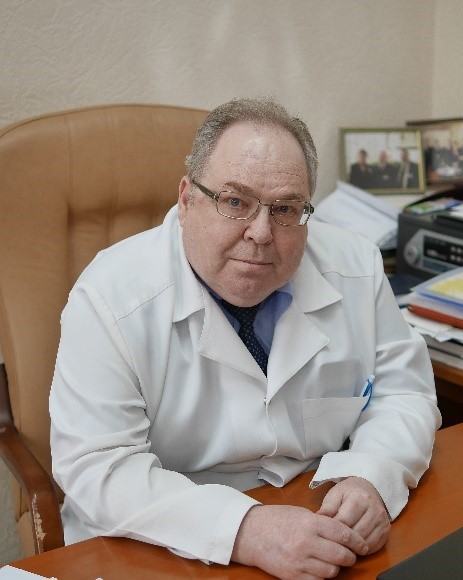
Academic and research Journal «Regional Blood Circulation and Microcirculation» is a multidisciplinary research and practice journal that provides a platform for the publication of research in a broad range of medical fields and specialties, including all branches of cardiovascular research both experimental ones and related to different areas of clinical medicine such as cardiology, cardiovascular surgery, radiology, neurology etc.
To be accepted for publication the submitted material should be earlier unpublished and correspond to the journal's area of expertise: reviews, and results of completed original clinical and experimental studies, lectures, descriptions of clinical cases, book reviews, readers' comments on earlier published papers, letters to the editor, information on scientific events.
The Journal is registered in the Ministry of the Russian Federation for Affairs of the Press, Television and Radio Broadcasting and Mass Communication Media.
The Certificate about the registration of mass media «ПИ № 77-9025» from 21.05.2001.
The Journal is the official organ of the Association for Microcirculation and Regional Hemodynamics that is part of the European Society for Microcirculation.
The editorial board and editorial review board of the Journal consist of 30 scientists from top-ranked Russian universities and research centers, including 5 academicians and 6 corresponding members of the RAS. The international editorial review board includes 5 experts from Great Britain, Norway, Germany, Portugal and Georgia.
«Regional Blood Circulation and Microcirculation» is on the list of peer-reviewed scientific journals that publish the main results of dissertations for a Candidate of Sciences degree, for a Doctor of Sciences degree in scientific specialties and related fields of science.
From 15.02.2023:
3.1.25 - Radiology (Medical Sciences).
From 01.02.2022:
1.5.5 – Pathological Physiology (Medical Sciences),
1.5.5 – Pathological Physiology (Biological Sciences),
3.1.9 – Surgery (Medical Sciences),
3.1.15 – Cardiovascular Surgery (Medical Sciences),
3.1.18 – Internal Medicine (Medical Sciences),
3.1.20 – Cardiology (Biological Sciences),
3.1.20 – Cardiology (Medical Sciences),
3.1.24 – Neurology (Medical Sciences),
3.3.1 – Human Anatomy (Medical Sciences),
3.3.3 – Pathological Physiology (Biological Sciences),
3.3.3 – Pathological Physiology (Medical Sciences).
The subscription index in the Rospechat catalog – 15371, in the Press of Russia catalog – 42410.
Current issue
REVIEWS
ORIGINAL ARTICLES (CLINICAL INVESTIGATIONS)
ORIGINAL ARTICLES (EXPERIMENTAL INVESTIGATIONS)
CLINICAL CASE
Announcements
2024-07-01
20 июня 2024 года ушел из жизни профессор Виктор Иванович Амосов

Редколлегия журнала с глубоким прискорбием сообщает, что 20 июня 2024 года ушел из жизни профессор Виктор Иванович Амосов, заместитель главного редактора журнала «Регионарное кровообращение и микроциркуляция».
Виктор Иванович в 1979 году поступил в 1 Ленинградский медицинский институт им. акад. И.П. Павлова и в 1985 году закончил его с отличием. С тех пор судьба Виктора Ивановича была неразрывно связана с Университетом. С 1985 по 1989 год он являлся клиническим ординатором, затем аспирантом кафедры рентгенологии и радиологии после чего в 1989 году защитил кандидатскую диссертацию, а в 1996 году – докторскую диссертацию. В 1998 году ему было присвоено ученое звание профессора.
Виктор Иванович являлся автором более 280 научных работ, из них 12 монографий и глав монографий, посвященных лучевой диагностике, лучевой терапии, пульмонологии, а также проблемам Высшей Школы. Он являлся автором 8 изобретений, 2 новых медицинских технологий, посвященных совершенствованию методов лучевой диагностики в пульмонологии. Под его руководством выполнены 19 диссертационных работ, их них – 3 докторские.
Виктор Иванович неоднократно избирался президентом крупных конгрессов с международным участием: Невский Радиологический Форум–2009; IV Международный конгресс и школа для врачей «Кардиоторакальная радиология» –2016; «Радиология–2021» и XIII Всероссийский научно-образовательного форум с международным участием «Медицинская диагностика–2021». Являлся членом 3-х диссертационных советов по лучевой диагностике: при ПСПбГМУ им. И.П. Павлова; при ВМедА им. С.М. Кирова; при ФГБУ «НМИЦ им. В.А. Алмазова».
Амосов В.И. был отмечен благодарностью Министерства здравоохранения за добросовестный труд. Награжден медалью им. профессора М.И. Неменова, был лауреатом Почетного знака им. профессора Ю.Н. Соколова.
Являлся членом редсоветов научно-практических рецензируемых журналов: «Лучевая диагностика и терапия», «Российский Электронный Журнал Лучевой Диагностики», «Визуализация в медицине (Visualization in medicine)». Был членом Европейского общества радиологов, членом правления Санкт-Петербургского Радиологического Общества.
Редколлегия журнала «Регионарное кровообращение и микроциркуляция» выражает искренние соболезнования коллегам, друзьям, родным и близким Виктора Ивановича.
| More Announcements... |




































